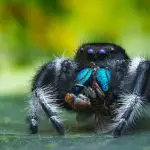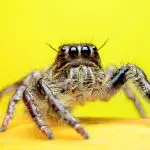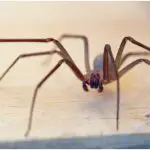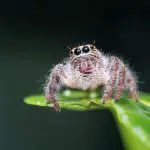Last updated on June 22nd, 2023 at 04:41 pm
The venomous spiders in Texas are a diverse group, ranging from Tarantulas to Black Widows. Let’s learn more about how dangerous they really are…
There are many spiders in the state of Texas. However, there are two venomous ones from the bunch i.e., the Brown Recluse and Black Widow.
Both of these venomous spiders can be found outdoors and indoors. It’s important for the residents to be aware of these spiders for their safety.
Victims become extremely vulnerable when they get bit by any of these two spiders. If the wound is left untreated, then it will lead to serious health consequences.
Venomous Spiders in USA
Texas is the 2nd largest state in America, and it is home to a lot of exquisite wildlife. This state is also known for having some of the most venomous spiders in the country.
Black Widow Spider
The Black Widow Spider is also known as Latrodectus Mactans, and it is widely present in the Houston area. It features a jet-black color, along with a red-colored hourglass mark on its abdomen.
This Southern Black Widow has a potent venom but it’s rarely fatal for people with good health. Only an individual with a weak immune system will suffer on its venom.
But that doesn’t diminish the fact that its bite is still painful and unpleasant. It will lead to flu type of symptoms like headache, fever, and nausea.
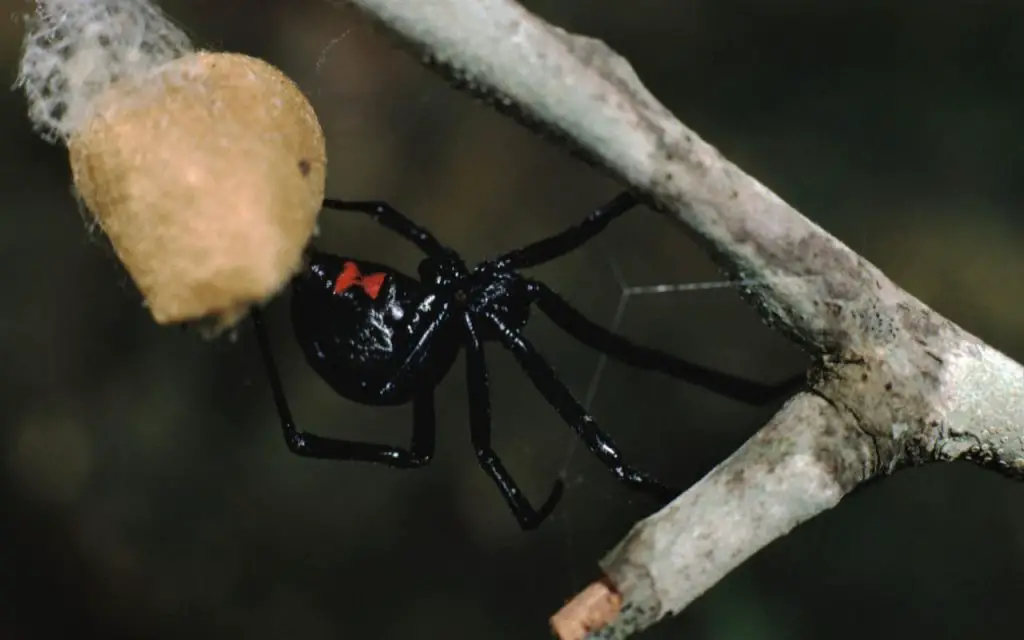
Brown Recluse Spider
The Brown Recluse Spider goes by the scientific name of Loxosceles Reclusa. This hairless spider possesses a violin shape of dark brown tone on its back.
Here, this specific mark gives this spider the nickname of ‘Violin Spider’ or ‘Fiddleback Spider.’ This spider is known for its powerful venom.
A bite from this spider will cause health issues like extreme fatigue, fever, and nausea. In more serious situations, there are cases of disfigurement and skin destruction.
It is advisable to visit a doctor if you get bit by one.
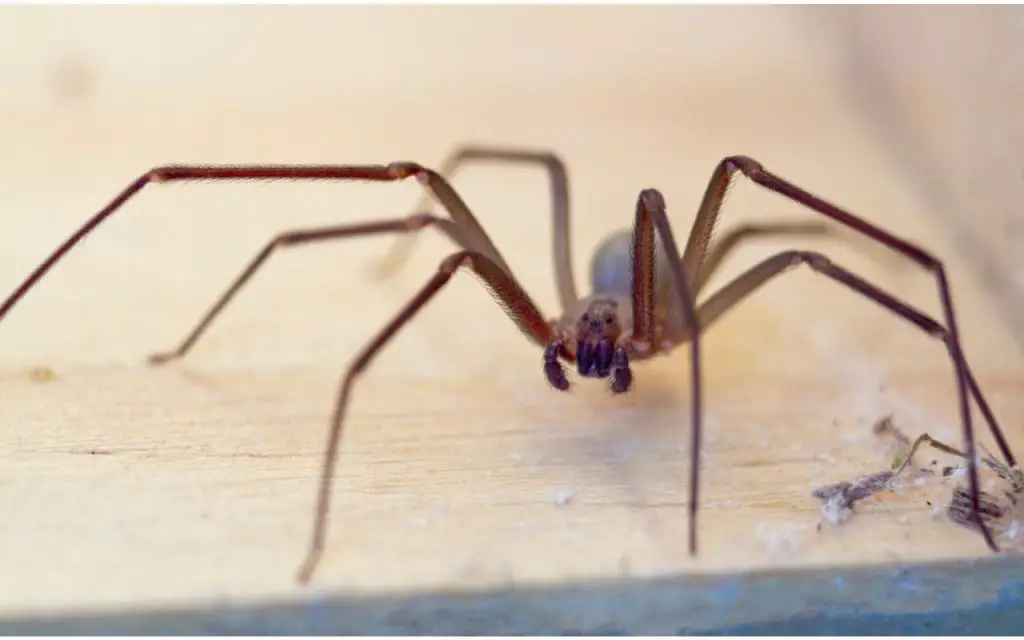
Texas Brown Tarantula
Texas Brown Tarantula tend to scare the general population because of its large size and ugly appearance. But fret not because they aren’t as dangerous as they may appear based on their grotesque look.
A Tarantula will only attack if they feel threatened. When it comes to its bite, the pain is comparable to that of a bee sting.
But there are individuals who are allergic to its venom too, which doesn’t have a pretty end. You must seek immediate medical attention if you get bit and develop shortness of breath, rash, and welt.
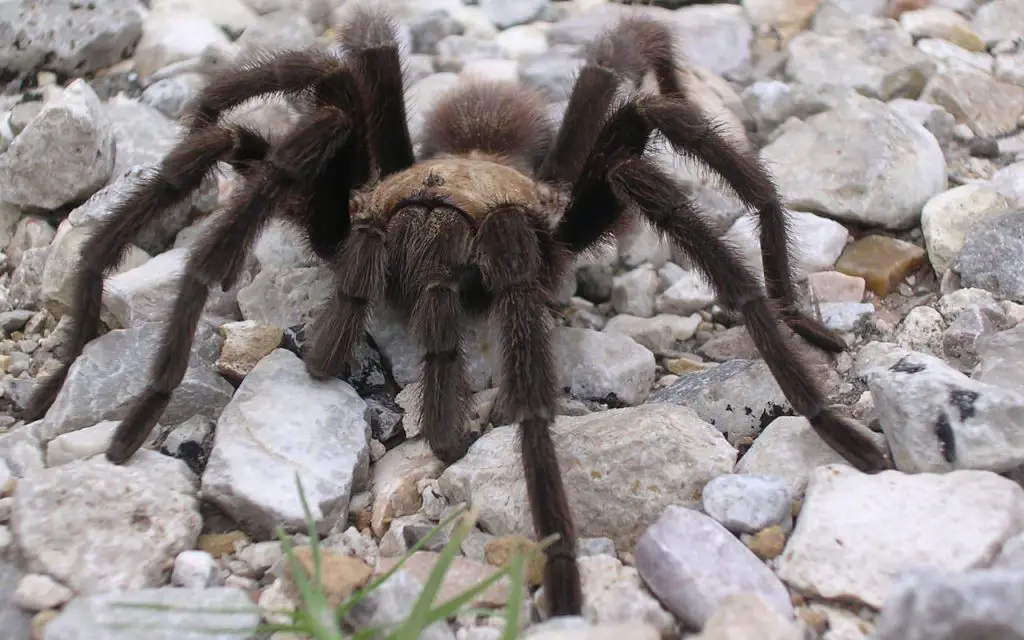
Common House Spiders in Texas
Every single home in the world has spiders. Here are some of the common house spiders in Texas:
Common House Spider
To start off the list, we have the Common House Spider. The size and color patterns of this spider tends to vary.
However, they usually possess a dark chevron type of pattern and are yellowish-brown in color. This spider loves staying indoors and loves building webs in corners of the room.
It is easily identifiable with its eight legs and elongated body. These spiders are shy by nature and only bites when they are provoked.
They tend to pass a venom when they bite, causing swelling and itching.
Longbodied Cellar Spider
This indoor spider loves to hang upside down at all times from their webs. It loves to catch and munch on any flying insects.
The spider has long translucent colored legs that is similar to that of Daddy Long legs. They aren’t harmful and chances of you getting but by one is zero.
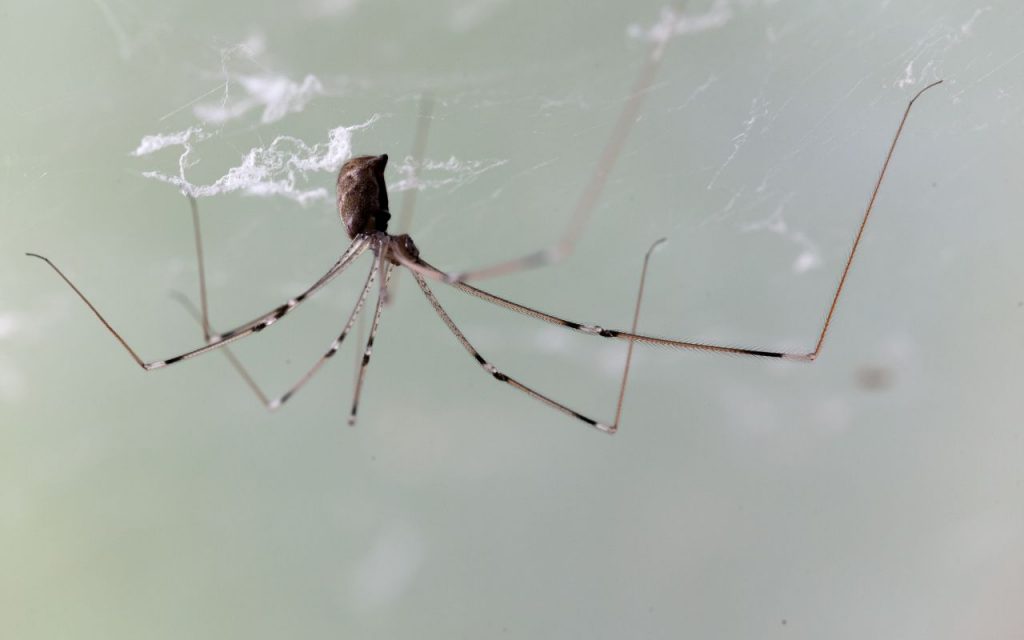
Brown Widows
Brown Widows are cousins of the Black Widow. But they are light in color and shy compared to the Black Widow.
They enjoy staying in quiet and undisturbed locations. It has a toxic venom, but it doesn’t inject a lot of it.
Woodlouse Hunter
This spider has a cream-toned hind body, dark red font, along with six eyes. You won’t find this spider indoors because they love hiding under natural debris, logs, and leaves.
This is why it gets the nickname of Ground Hunter. They have long fangs that when bit, feels like a bee stung you.
However, the Woodlouse Hunter isn’t poisonous to human beings.
Carolina Wolf Spiders
Another common house spider in Texas is the Wolf Spider. They have large stocky bodies, along with spiny hair-covered legs.
It has 8 eyes, which are placed uniquely in 3 rows. The bottom row, middle row, and top row has 4 small eyes, 2 large eyes, and 2 medium eyes, respectively.
These spiders can come in tan, brown or gray color. The worst-case scenario from its bite has been necrosis lesions.
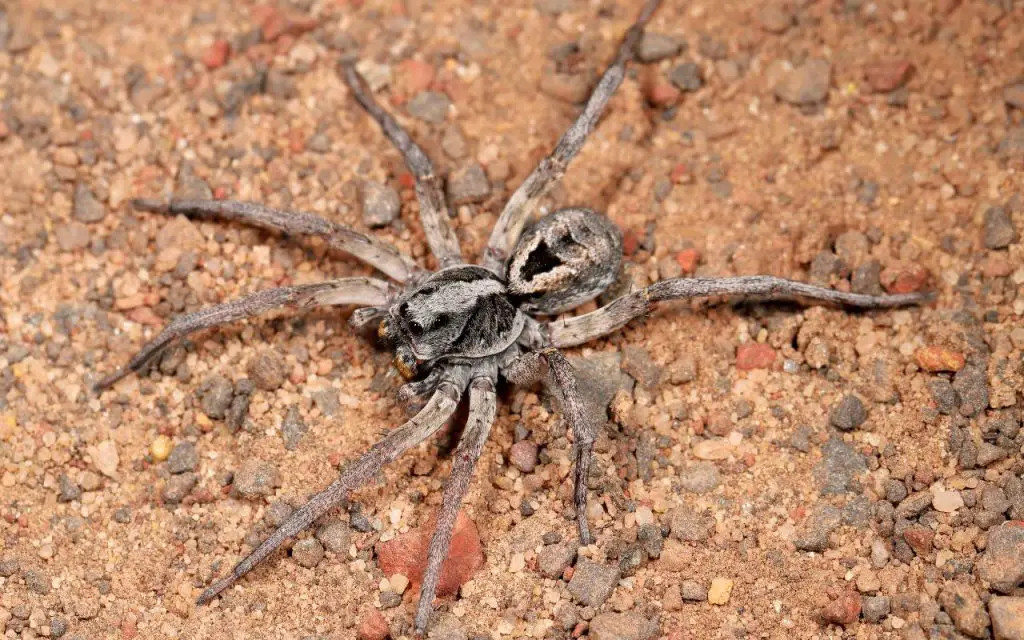
What Is the Most Dangerous Spider in Texas?
The Brown Recluse Spider gets the title of the most dangerous spider in Texas. Its venom is less potent than that of a Black Widow, but it tends to be involved in bites on humans more often.
The body of this spider spans 1/4 inches long and they grow an inch in its leg span. This spider features tan abdomens, long legs, and large mouthparts.
Its venom is too potent that it can ruin the tissue of your skin near the bite mark. Tissue damage and ulcers are common side effects of its bite.
It is the most dangerous from the bunch because there have been a couple of recorded deaths from its bite.
Brown Recluse loves to stay indoors and hate areas with high traffic. You can find them in pantries, attics, closets, and basements.
Most people may argue that the Black Widow is the most dangerous. However, there have been no deaths recorded from their bites so far in Texas.
Black Widow Spider Texas
Black Widow is one of the most dangerous spiders in Texas. Their popularity makes them easily recognizable anywhere in the state or country itself.
It has a red-colored hourglass appearance on its back. They rarely bite humans, and they will only do so if they are provoked or disturbed.
Black Widows tend to reside in places that are dimly lit, cluttered locations, dark basement corners, and closets. You can easily find them in garages, overhanging ledges, barns, and under benches as well.
These spiders like dry areas and hate moisture. The mating ritual of this spider is actually quite bizarre if you think about it.
The male proceeds to enter the female’s web to destroy it, making it unattractive to the remaining males. This act decreases the pheromones of the female.
The female remains receptive to the male and doesn’t mind its web being destroyed. But the female may devour the male after the mating process.
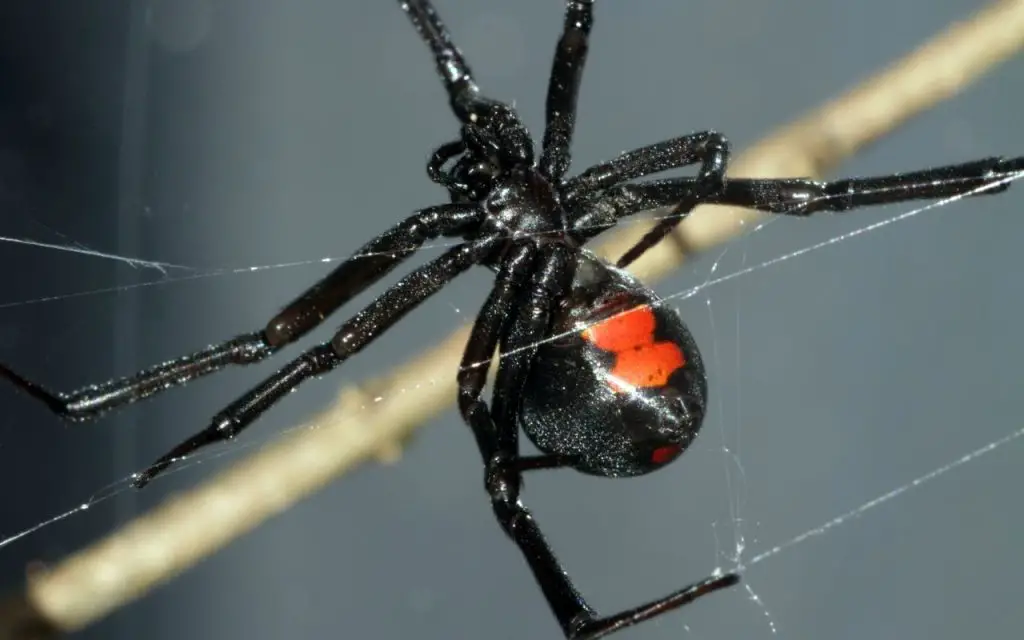
Black Widow Spider Texas Bite
Did you know that the venom of a Black Widow Spider is 15x stronger than that of a rattlesnake? Its venom affects the nervous system, causing severe responses.
The neurotoxic venom of this spider poses a great threat to children in particular. If one is bit, then the person should seek medical attention immediately.
A person will face any of these symptoms when bit by one:
- Vomiting
- Abdominal Cramping
- Unconsciousness
- Abdominal Rigidity
- Tremors
- Convulsions
- Sweating Profusely
- Headache
- Pain
- Nausea, and
- Lesions.
Texas Recluse Spider
The Texas Recluse Spider is one of the most common brown spiders. Apart from Texas, it is also available in places like Florida, Ohio, Nebraska, and more.
The cephalothorax of this spider has violin-shaped markings. Here, the cephalothorax is referring to the thorax and fused head.
This spider loves to hide in dusty and dark places. You will likely find them under deep piles of wood.
It will distance itself from humans and mind its own business. But it will attack in defense mode whenever provoked or disturbed.
You can easily identify this spider with its six eyes that are sits in 3 pairs along its back. If you get bit by one, then you will witness these symptoms:
- Chills
- Fatigue
- Nausea
- Restlessness
- Necrosis on the bite area.
- Blue, red, and white lesions on the bitten area.
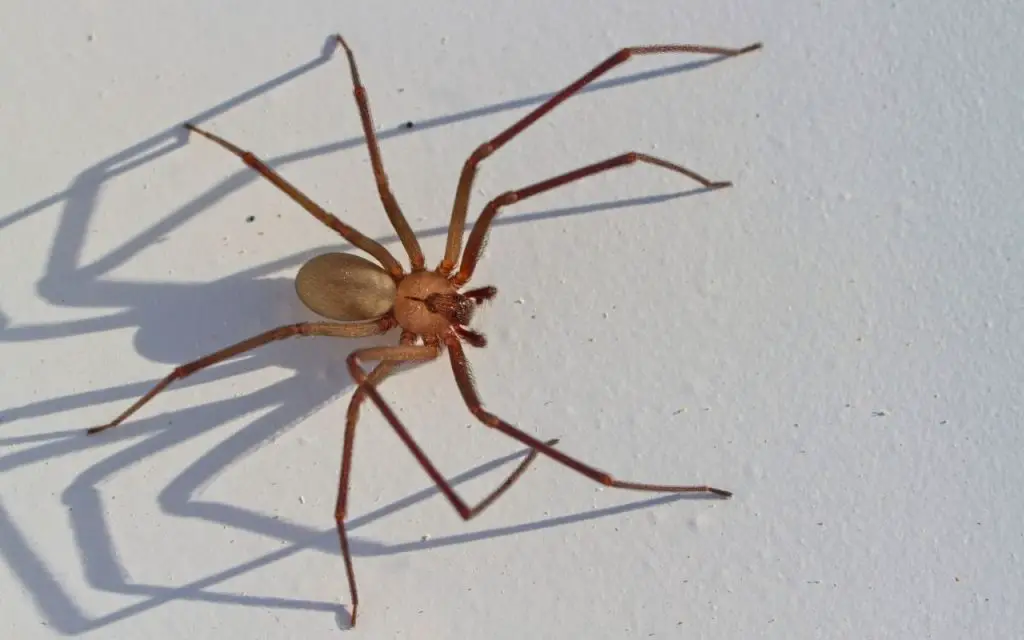
Brown Widows
Brown Widows aren’t native to Texas and originally comes from South America and Africa. They love to stay in warm areas, especially near buildings.
Females are light brown in color and their length can be anywhere from 1/4 – 5/8 inches. Its abdomen possesses an orangish type of hourglass design mark on its underside.
The males tend to be smaller than females. Here, if you look at their underside, the orange spot on its abdomen is split into two spots.
Legs on both genders are dark with light brown near their joints. These spiders also go by the nickname of ‘Grey Widows.’
Their venom is toxic but not as much as that of its cousin Black Widow. They rarely bite and are timid in nature.
You can look for these symptoms if bitten by one:
- Potential Seizures
- High Blood Pressure
- Respiratory Muscle Weakness
- Sweating, and
- Vomiting.
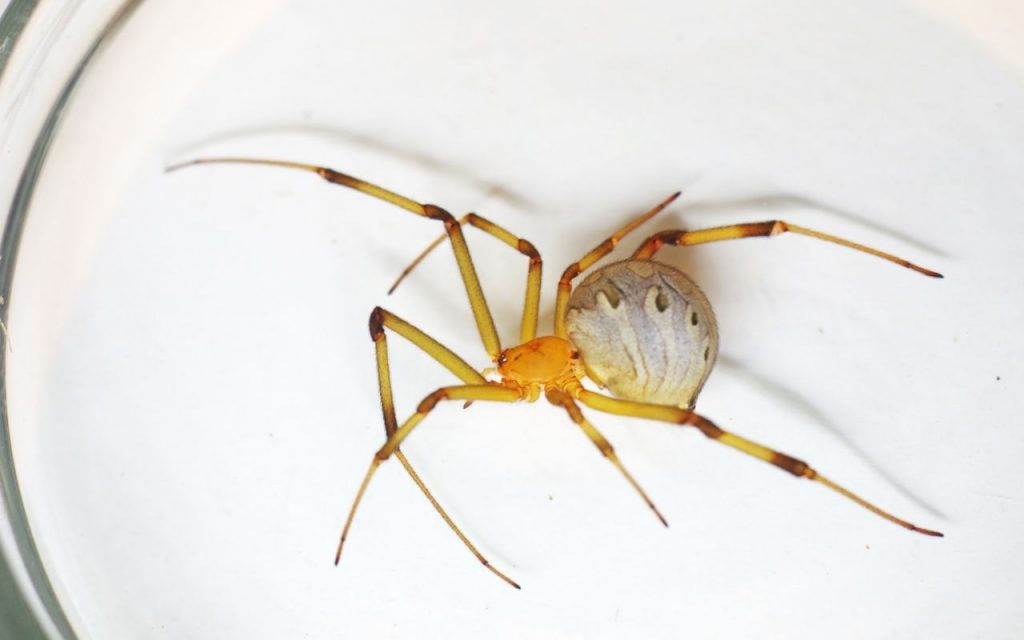
Yellow Sac Spiders
Yellow Sac Spiders possess a pale-yellow beige type of color accompanied by dark brown markings present on its ends of the feet, palps, and jaws.
An orange-brown type of stripe can be seen running down on its abdomen’s top center area. Its appearance serves as an inspiration for its name.
These spiders are venomous and have the tendency of biting humans. Common symptoms once bit includes swelling and itching.
The symptoms tend to go away after a period of 7 to 10 days. There are reports that its bite doesn’t cause necrosis.
You can locate them in shrubs and foliage of trees. But they are also found indoors however their nocturnal nature only makes them active at night for feeding and mating rituals.
It was found that these spiders are attracted by the gasoline’s smell. These spiders caused a big problem back in 2011 for the automobile company called ‘Mazda.’
Their webs were clogging the ventilation tubes of fuel systems in about 65000 Mazda cars.
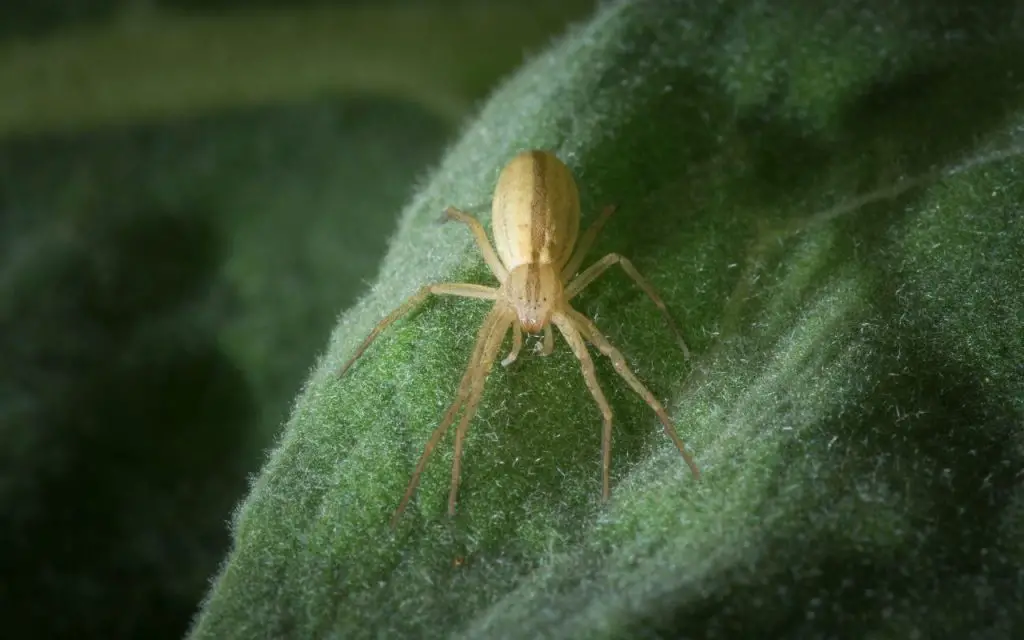
Are There Hobo Spiders in Texas?
Yes, you can find Hobo Spiders in Katy, Texas. This spider spans 50mm in its size and they also go by the name of ‘Funnel-Web Spiders.’
They get this name because of their unique technique in building webs. Hobo spiders are light-medium brown in color and possess a dark stripe on the down center area to both sides of its lighter midline stripes.
The legs are fully light brown in color. It has an oblong abdomen, accompanied by long posterior spinnerets that can be seen from the top.
FAQs
Are Texas Brown Spiders Poisonous?
Texas Brown Spiders are not poisonous: they’re venomous. Venomous means they have a way of introducing venom into a bite, that is to say their fangs.
Nonetheless, their venom is weak, and they are a harmless species. If you see one, just let it carry on where it’s going. Often, tarantulas are spotted when looking for mates and have no intention of hurting humans.
Does Texas Have Poisonous Tarantulas?
Texas has a few species of Tarantula, all of which are venomous. None of them are dangerous, though. In fact, they are reluctant bite and are beneficial.
Their main role in the environment is preying on pest species like locusts and cockroaches. You should always be pleased to see a tarantula, as they are a sign of a healthy ecosystem.
Are Black Widows Common in Texas?
Yes, Texas is highly known for having one of the most venomous spiders i.e., the Black Widow Spider. Black Widows are particularly fond of warm temperatures.
They are also good at finding safe hiding places amongst wood piles, rocks and other debris. This makes Texas ideal for them, as even in the desert of west Texas they can thrive.
Are Texas Jumping Spiders Venomous?
Yes, the Texas Jumping Spiders are venomous. They are so small and their venom so weak, however, that their bites are not medically significant. From experience, I say that a bite from a Jumping Spider is not even as painful as a sting from a yellow jacket.
As always, you should monitor any bite for an allergic reaction, and contact a medical professional if you feel unwell.



